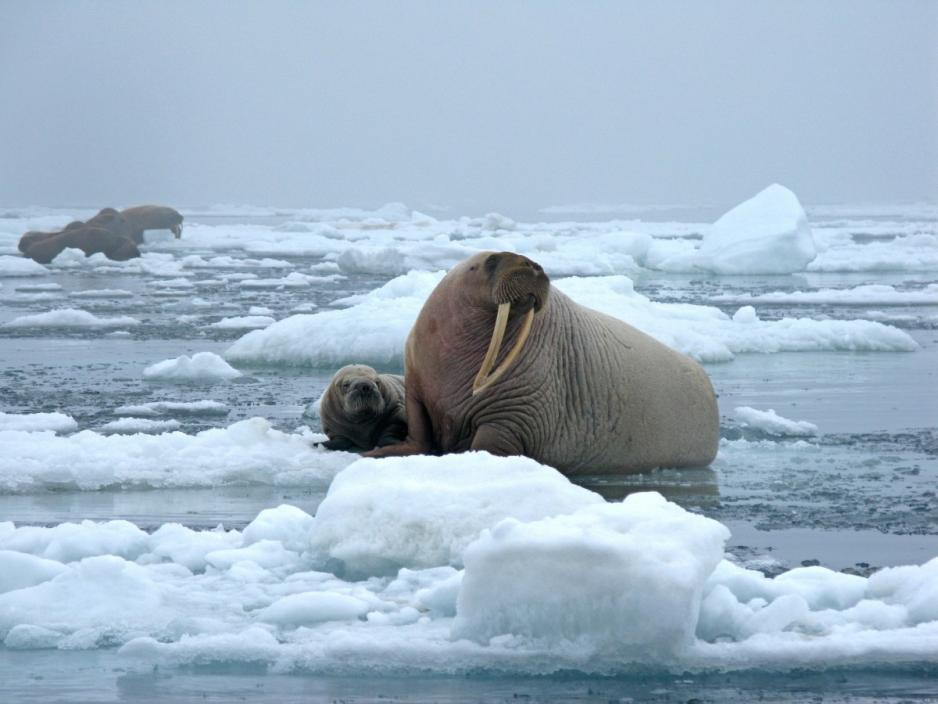Banned Toxic Chemicals Finally Decreasing in Arctic Wildlife

Large marine mammals accumulate persistent organic pollutants in their fat tissue, posing a dangerous health risk for subsistence-based Arctic communities. (Photo: pxhere)
New research shows that persistent organic pollutants are finally disappearing from the Arctic, two decades after outlawing their use in pesticides, flame retardants, and fabric coatings.
A new, decades-long study published in the peer review journal Science of the Total Environment has found a measurable decrease in persistent organic pollutants (POPs) in the Arctic. An international team of 18 scientists, led by biologist Dr. Frank Riget of the University of Aarhus, analyzed more than 1,000 specimen taken over several decades and sampled across Arctic region. Using a robust statistical method, the team determined that the majority of legacy POPs showed a declining trend in Arctic marine and freshwater wildlife, with increasing trends only present in areas influenced by local sources.
"The strength of the approach is to analyse a large number of POP time-series covering a large area of the Arctic," Dr. Riget told High North News, "including several different Arctic species and using the same statistical method in order to make the results as much comparable as possible."
The Long-Term Dangers of Short-Term Benefits
Most persistent organic pollutants do not originate in the Arctic, but accumulate there over time. During the industrial boom following World War II, thousands of manmade chemicals were introduced into commercially available products. For decades, countries across the planet used unknowingly harmful industrial chemicals, pesticides, and dioxins, ranging from PCBs in paints and adhesives to the now infamous pesticide DDT, which is still used to control mosquitoes and the spread of malaria.
POPs don’t stay where they are produced and used. Because they can be transported by wind and water across country boarders, many of these pollutants have traveled through air and ocean currents to the Arctic. As products resistant to environmental degradation, POPs can persist in the north for decades in the environment, accumulate in the oceans, soils, and fatty tissues, milk, and blood of living organisms.
Bioaccumulation is bad news for northern wildlife and humans. Large marine mammals in the Arctic have a higher fat content for a colder climate, meaning that seals, whales, fish, and other animals hunted for subsistence-based diets expose Arctic indigenous communities to reproductive, developmental, behavioral, neurologic, endocrine, and immunologic adverse health effects.
As negative health effects became more apparent in the 1980s and 1990s, the need for action was clear.
Working Together Works for a Healthy Environment
On May 22, 2001 152 nations gathered in Stockholm to sign a United Nations treaty to eliminate, restrict, or minimize the unintentional production of 12 of the most widely used toxic chemicals. The "dirty dozen" banned by the treaty, commonly known as the Stockholm Convention, is what Dr. Riget and his team have been monitoring since its passage.
Their study, the largest and most comprehensive monitoring analysis of these toxic chemicals in the high north, is strong evidence that international cooperation on environmental protection works. "Cooperation and charring data among Arctic scientists can lead to results and conclusions that are based on large amount of evidence," Dr. Riget explains, connecting the decrease in pollutants to the Stockholm Convention.
"Temporal monitoring gives a measure of the efficiency of international regulation," he posits. "The study shows that national and international control and regulations work, but also that well-known pollutants such as PCB and DDT can be expected to be in the Arctic environment many years into the future."
More Monitoring Needed for New Pollutants
"Some of these new pollutants may have the risk of being as harmful as some of the well-known pollutants from the past," Dr. Riget says. One such pollutant is the flame retardant hexabromocyclododecane (HBCDD). As one of the recent additional POPs added to the Stockholm Convention in 2017, the new study found an annual increase of 7.6 percent over the past two decades.
While we should see a decline now that HBCDD is recommended for elimination from use, Dr. Riget and his team will continue their monitoring work. "Temporal monitoring of pollutants in Arctic ecosystems should be continued and monitoring of "new" contaminant of increasing concerns should be initiated."
Still, even with more work needed, Dr. Riget is hopeful about the success of the Stockholm Treaty for finding a collaborative solution to other global challenges. "It shows the importance of reacting in time especially when having the large number of new pollutants in mind that all the time are produced."

